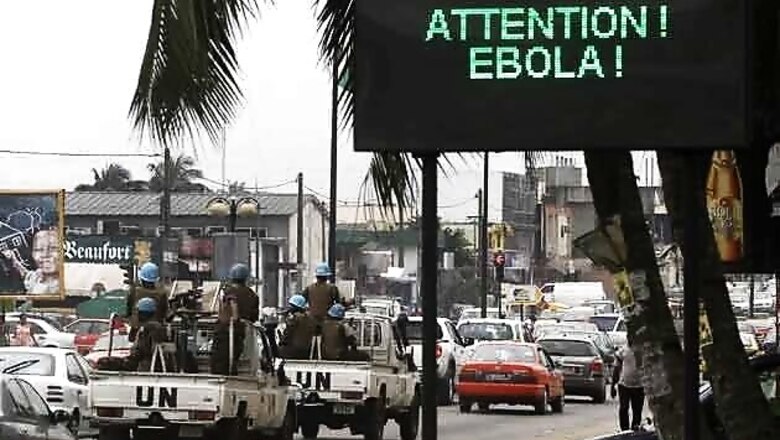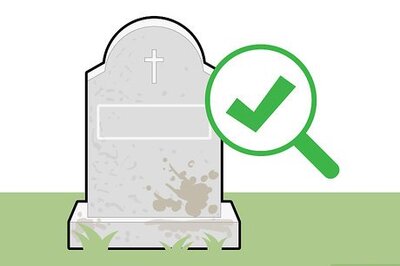
views
London: Two months ago, the World Health Organization launched an ambitious plan to stop the deadly Ebola outbreak in West Africa, aiming to isolate 70 per cent of the sick and safely bury 70 per cent of the victims in the three hardest-hit countries - Guinea, Liberia and Sierra Leone - by December 1.
Only Guinea is on track to meet the December 1 goal, according to an update from WHO.
In Liberia, only 23 per cent of cases are isolated and 26 per cent of the needed burial teams are in place. In Sierra Leone, about 40 per cent of cases are isolated while 27 per cent of burial teams are operational.
With the target date looming on Monday, it looks almost certain WHO's goals will be missed, marking another failure in attempts to slow the biggest-ever outbreak of the deadly disease. The Ebola outbreak was first reported in Guinea in March and spiraled out of control after being declared a public health emergency in August.
WHO's Dr. Bruce Aylward acknowledged in October that to reach the December 1 goal would be "really pushing the system hard."
"If we don't do it in 60 days and we take 90 days: No. 1, a lot more people will die that shouldn't; and No. 2, we will need that much more capacity on the ground to be able to manage the caseload," said Aylward, who is directing WHO's Ebola response.
In recent weeks, there have been some successes in curbing Ebola; cases seem to be declining or stabilizing in Liberia and Guinea. But the area around Sierra Leone's capital and a district in the country's north are seeing a severe surge in cases.
The December 1 targets had been met in many places - but not all, which was the goal, said Anthony Banbury, who is heading the U.N.'s Ebola response.
"There are still going to be many people who catch the disease and many people who die from it," Banbury said.
Even if the December 1 targets had been reached, WHO and others had predicted Ebola would continue sickening people in West Africa and possibly elsewhere until sometime next year. Ebola has sickened more than 16,000 people of whom nearly 7,000 have died, according to figures released by the World Health Organization Friday.
Failing to reach the December 1 target now suggests Ebola will spread even further as capacities to respond become even more stretched, according to Oyewale Tomori, of Redeemer's University in Nigeria, who sits on WHO's Emergency Ebola committee.
"We need to redouble our efforts to see what we can do to reduce the spread and catch up with the virus," he said. "Right now, it doesn't look good."
Other experts said the WHO goals were never very significant.
"You want to isolate 100 per cent of patients with Ebola and have 100 per cent safe burials," said Sebastian Funk, director of the Centre for the Mathematical Modelling of Infectious Diseases at the London School of Hygiene and Tropical Medicine. "Getting to 70 per cent doesn't really mean a lot."
The ultimate goal of WHO's plan is to isolate all Ebola patients and provide safe burials for all by January 1.
"We hope that what we're seeing in Liberia will continue, but unfortunately what can happen with Ebola is that it can go to new countries, as it has already to Mali," warned Dr. David Heymann, an Ebola expert who previously worked for the World Health Organization. "The most dangerous thing would be if people now think Ebola is over and become complacent," he said. Earlier this month, the US announced it was scaling back the size and number of Ebola clinics it had initially promised to build in Liberia, citing a drop in cases.
The U.N.'s Banbury said the critical gap in those locations were new beds and that ending Ebola would be a long, hard fight: "We're by no means out of the woods yet, but we're headed in the right direction."


















Comments
0 comment